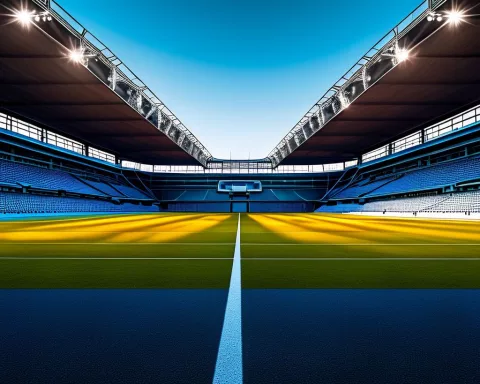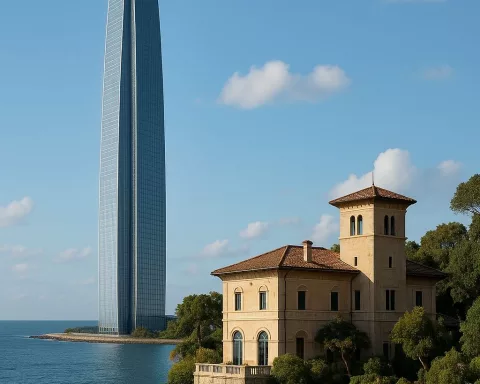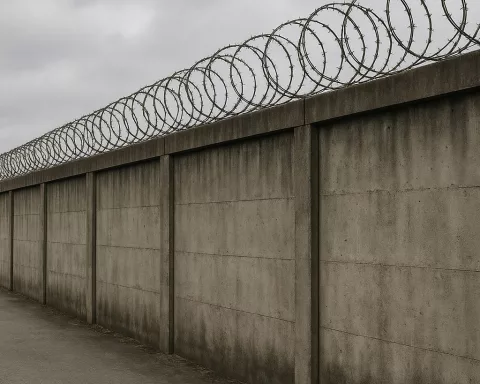The Danie Craven Stadium is a historic venue in Stellenbosch, South Africa, named after rugby icon Danie Craven. It holds significant importance in South African rugby history and pays homage to Craven’s lasting legacy as a national coach, rugby administrator, academic, and author. As the DHL Stormers face off against the Scarlet in the United Rugby Championship, the stadium generates a distinctive atmosphere that celebrates the past while embracing the present. Danie Craven’s legacy continues to inspire new generations to pursue glory both on and off the field.
What is the Danie Craven Stadium and what is its significance in South African rugby history?
Constructed in 1979 in Stellenbosch, the Danie Craven Stadium is named after a rugby icon and stands as a testament to his enduring legacy. Danie Craven was a national coach, rugby administrator, academic, and author whose influence in South African rugby spanned several decades. The stadium holds historical significance as a venue for rugby matches, evoking feelings of nostalgia and paying homage to the past while celebrating the present.
As rugby fans eagerly await the upcoming clash between the Springboks and the All Blacks, supporters of the Western Province will direct their attention to the Danie Craven Stadium, where the DHL Stormers will take on the Scarlet in the Vodacom United Rugby Championship (URC). Following a narrow win over the Lions in Week 1, the Stormers are determined to make a strong impression during their first home game. Simultaneously, South Africa’s title defense is predicted to ignite ecstatic celebrations, with the nation potentially securing the trophy for a record-breaking fourth time at the Stade de France.
Danie Craven’s Lasting Legacy
The Stormers’ match at the Danie Craven Stadium is a fitting prelude to the momentous day, as Danie Craven’s name is synonymous with the Springboks and South African rugby history. Craven’s multifaceted career includes roles as a national coach, rugby administrator, academic, and author, with his influence spanning several decades.
During his time as the Springboks coach from 1949 to 1956, the team boasted an impressive 74% win rate, marking one of the most successful eras in South African rugby. Craven, primarily known for his exceptional dive-passing scrum-half skills, also played as a center, fly-half, number 8, and full-back for the Springboks. He served as the president of the South African Rugby Board from 1956 to 1993 and was appointed chairman of the International Rugby Board in 1962, 1973, and 1979.
Paving the Way for Unity
Craven’s courageous attempt to reintegrate South African rugby into the international arena in 1988 led him to meet with ANC leaders in Harare. This historic negotiation resulted in an agreement to establish a single rugby association that would field integrated teams in international competitions. However, Craven’s efforts were met with opposition from right-wing white South Africans who considered the agreement treacherous, while then-President PW Botha denounced it. Despite not immediately ending sporting isolation, Craven’s efforts laid the foundation for the unified South African Rugby Football Union (SARFU) in 1992.
A Symbol of South African Rugby Pride
Constructed in 1979 in Craven’s hometown of Stellenbosch, the Danie Craven Stadium stands as a testament to his enduring legacy. As the venue for the upcoming match between the DHL Stormers and the Scarlet, the stadium holds historical significance, situated in a city with established rugby roots and named after a South African icon. For many rugby enthusiasts, this game will evoke feelings of nostalgia and serve as a tantalizing precursor to the World Cup Final.
The stadium’s rich history, combined with the contemporary excitement of the United Rugby Championship, generates a distinctive atmosphere that pays homage to the past while celebrating the present. As the DHL Stormers and the Scarlet face off on the field, spectators will surely sense the weight of rugby history in the air. With the world watching the Springboks later in the day, the Danie Craven Stadium offers a fitting platform to showcase the pride and passion long associated with South African rugby.
The Spirit of South African Rugby Endures
On a day filled with anticipation, emotion, and potentially history-making events, the Danie Craven Stadium serves as both a tribute to past legends and a stage for today’s rising stars. As fans gather to witness the on-field battles, they are reminded of South African rugby’s enduring spirit and its unwavering commitment to excellence.
On this significant day for rugby, the Danie Craven Stadium symbolizes the hard-fought journey, passion, and pride that has driven South African rugby to greatness. As the Stormers take on the Scarlet and the Springboks gear up for their historic match, Danie Craven’s legacy continues to inspire new generations to pursue glory on and off the field.
1. What is the Danie Craven Stadium?
The Danie Craven Stadium is a historic venue in Stellenbosch, South Africa, constructed in 1979 and named after rugby icon Danie Craven.
2. What is the significance of the Danie Craven Stadium in South African rugby history?
The stadium holds historical significance as a venue for rugby matches, evoking feelings of nostalgia and paying homage to the past while celebrating the present. Danie Craven was a national coach, rugby administrator, academic, and author whose influence in South African rugby spanned several decades.
3. Who are the DHL Stormers and who are the Scarlet?
The DHL Stormers and the Scarlet are rugby teams that will face off in the Vodacom United Rugby Championship (URC) at the Danie Craven Stadium.
4. What is the United Rugby Championship?
The United Rugby Championship is a professional rugby union competition involving club teams from Ireland, Italy, Scotland, South Africa, and Wales.
5. What is Danie Craven’s legacy in South African rugby?
Danie Craven’s multifaceted career includes roles as a national coach, rugby administrator, academic, and author, with his influence spanning several decades. He is primarily known for his exceptional dive-passing scrum-half skills and served as the president of the South African Rugby Board from 1956 to 1993.
6. What was Danie Craven’s role in reintegrating South African rugby into the international arena?
Craven’s courageous attempt to reintegrate South African rugby into the international arena in 1988 led him to meet with ANC leaders in Harare. This historic negotiation resulted in an agreement to establish a single rugby association that would field integrated teams in international competitions.
7. What is the significance of the Danie Craven Stadium in South African rugby pride?
The Danie Craven Stadium stands as a testament to Danie Craven’s enduring legacy and for many rugby enthusiasts, this game will evoke feelings of nostalgia and serve as a tantalizing precursor to the World Cup Final. The stadium’s rich history, combined with the contemporary excitement of the United Rugby Championship, generates a distinctive atmosphere that pays homage to the past while celebrating the present.
8. What is the spirit of South African rugby?
On this significant day for rugby, the Danie Craven Stadium symbolizes the hard-fought journey, passion, and pride that has driven South African rugby to greatness. As the Stormers take on the Scarlet and the Springboks gear up for their historic match, Danie Craven’s legacy continues to inspire new generations to pursue glory on and off the field.












